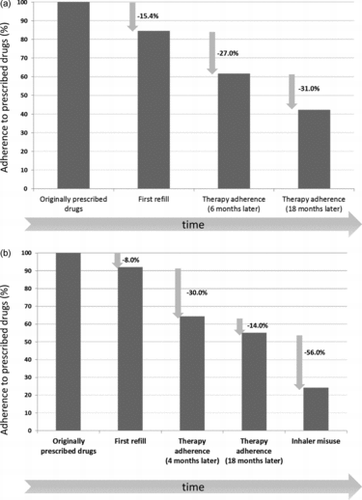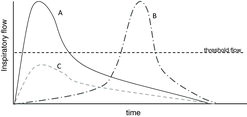Figures & data
Table 1. Description of the five potential domains related to non-adherence, as described by the World Health Organization (Citation20)
Figure 1. Adherence to prescribed therapy in generic chronic diseases (A) and in chronic respiratory diseases (B), both in studies in a real-world setting. Notably, in inhaled therapy, device misuse is a major additional cause of non-adherence in real life (Citation14, Citation20, Citation21, Citation22, Citation28–31).

Figure 2. Three typical flow profile curves from patients inhaling through a DPI device. Using the classical DPIs, the only effective one is the A profile, which imposes an elevated acceleration at the start of inhalation. The B profile achieves the threshold flow too late, negatively conditioning the quality of particle size. The C profile is inadequate because it does not reach the threshold flow to accurately deliver the dose.

Table 2. Main characteristics differentiating classical and newer dry-powder inhalers (DPIs) (Citation84, Citation99, Citation100)
